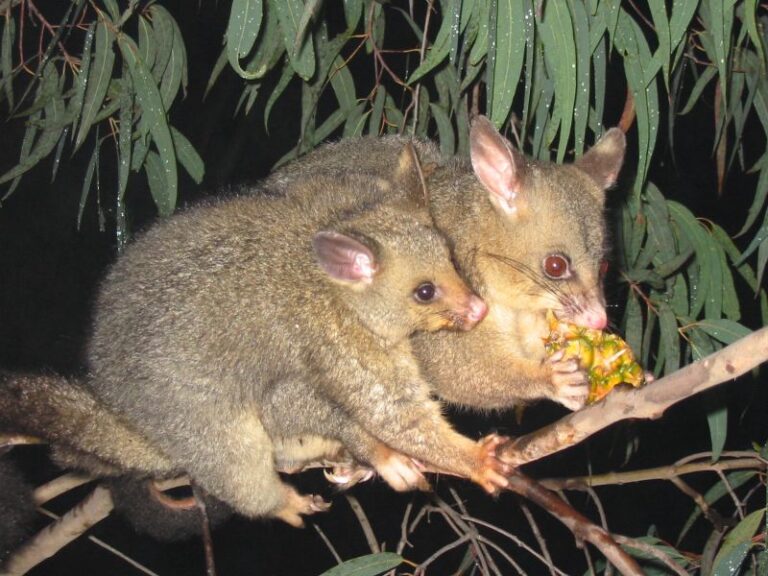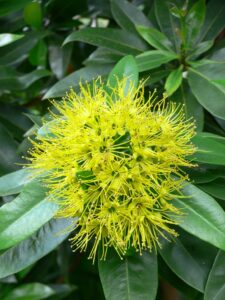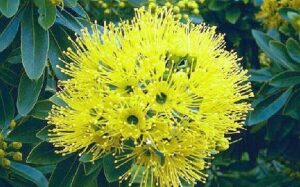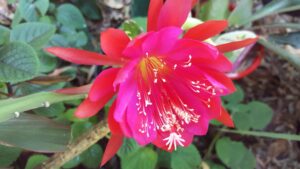What is your secret for getting rid of possums? There seems to be many different products and strategies for the purpose, in this article I will discuss various methods.
Possums and gardens just do not mix! With their taste for foliage, flowers, fruits and vegetables possums can be the very worst thing to have in your garden. It’s all very well and good to feel warm and fuzzy about being close to nature and having native animals as part of our ‘patch’ but this feeling does seem to wane, especially when we take an early morning stroll through the garden and see that the marauding little devils have had an exceedingly active night. They’ve nibbled on the prize rose buds, been at work on the young tender vegetables and generally had a wonderful time sampling all the wondrous things that have really started to thrive in your garden. It is at this juncture that we reach for a keyboard to find what is the absolute foolproof way to rid our garden of possums!
There have been suggestions of bright lights, fearsome predatory birds replicas, used silver bladders from wine casks and talk-back radio being broadcast over the garden. This latter suggestion, to my mind might just send you and your close neighbours to distraction!
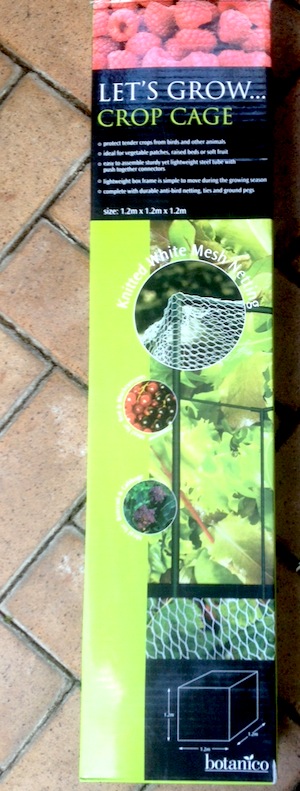
Sorry, but there is really nothing that totally works all the time. What works well for some, may well not be as effective for others.
One sure-fire way to beat these critters is the exclusion zone approach – or physical barriers. There are products available that can be used for this purpose. The netting kit (seen left) can be constructed and placed over what we want to protect. This is OK for a small area or group of plants but not practical for larger areas.
Of course you could make an enclosure to keep them out of the vegetable patch as we have however, for the rest of the garden this wouldn’t look all that attractive and be hugely expensive to boot.
Another exclusion method is to dress up your trees formally with a collar. In Tasmania, these collars are used extensively. A thin piece of sheetmetal at least 60cm wide will stop them climbing the tree as they cannot get any purchase on the slippery metal. This is a fantastic way to keep possums out of a particular tree – however could be a bit difficult if there are sugar gliders involved as they can leap quite large distances from tree to tree – up to 90 metres!
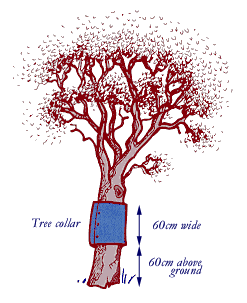
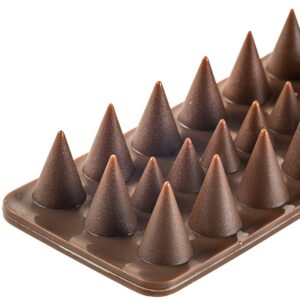
Another physical barrier is spikes to impede their access along fences and pergola beams – there are some that can be wrapped around tree trunks too.
Please Note: compounds that dissolve in water are likely to be removed by rain and should be reapplied after rain or heavy dew. It is wise to test any of these following suggestions on a small part of a plant, to see whether it causes any damage to the plant, before applying it more generally.
There are quite a few chemical solutions – D-Ter and Scat, these are powder preparations that are diluted in water to make a liquid spray. They work on the possum’s sense of smell and taste and can be applied to the plant itself as well as the surrounding area.
Poss Off protection is made with chilli, garlic and citronella and is a very strong-smelling, bitter tasting solution that possums don’t like. Spray it onto plants in the evening, so it’s fresh overnight when they are foraging. If you need to spray larger plants a large scale pump action garden spray may be needed.
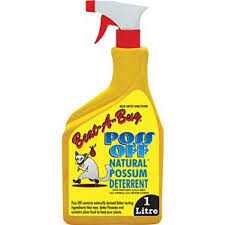
Charlie Carp a fish based fertiliser – spray or paint on plant stems or other parts to be protected – guess this has the added advantage of feeding the plant too!
Blood & Bone which is an animal derived fertiliser, sprinkle around the base of plants to be protected – this will feed the plant too.
Tea based home-made brew – boil two litres of water and add four heaped tablespoons of Lapsang Souchong tea; leave to steep and cool. Straing the liquid and apply with a spray directly onto affected plants. Reapply every two weeks and always after rain – make a fresh brew each time.
Garlic spray, you can make your own garlic spray by placing two tablespoons of freshly crushed garlic in a litre of hot water. Allow to stand overnight, strain and spray onto foliage.
Tabasco Sauce – use full strength as paint or spray – this might not be a good idea on any edible plants….
Indonesian fish sauce – place one tablespoon of sauce into a litre of water and spray on foliage.
Quassia chips – this is a bark from a South American tree, add 100g chips to 2 litres of water and heat for one hour before straining. Add one tablespoon of detergent, dilute to the rate of 1 part of solution to four parts of water and apply as a spray.
Vicks can be used for a home-made remedy. Mix equal quantities of Vaseline and Vicks VapoRub on a plastic container. Use a knife to spread the mixture along any known possum routes eg along fences.
Spotlights trained onto trees can often be effective in reducing possum attacks. To save electricity it might be a good idea to try a spotlight with a motion detector.

Strayban is a computerised device, that emits a rotating ultrasonic sound frequency. It’s inaudible to humans, but discomforting to possums, so they quickly move on from the area. The unit plugs into a power point and is effective for up to 10m in front of the unit. I’m not sure if your family Fido will like this – from my reading I couldn’t find any information about how dogs react to this device!
Scarecrow motion-activated water sprinkling device that repels pest animals by startling them with an unexpected spritz of water. This device is environmentally friendly and very humane as it does not hurt the possums and the effect of the sudden noise, movement and spray of water is both startling and immediate. It will work day and night and is solar powered…….. it does come at a price around $130 mark.
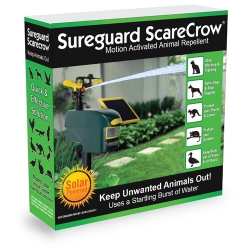
The effectiveness of any of these suggestions is not proven, however they are listed in case people wish to test them to see if they offer any level of protection for their gardens.
Possums and New Zealand
European settlers aiming to establish a wild source for food and fibre and fur pelts for clothing introduced the common brushtail possum from Australia to New Zealand in the 1850s and by the early 1980s these critter’s population had peaked at an astounding estimated 60-70 million. Through control measures, by around 2010 this population had been halved. A small cottage industry in fur pelts and wool mixed with possum fur fibre has developed and is sold as ‘eco-fur’. The numbers of animals taken for fur is rising and has almost equalled the numbers killed in poisoning and yes, those New Zealanders are even exporting possum meat to Taiwan, Hong Kong and Malaysia for human consumption and it is known as ‘Kiwi bear’! Also the Kiwis are processing possum dog food and marketing it as ‘Possyum’, this is also for the export market. The Kiwis sure know how to make a positive from a negative and be commercially viable at the same time.
On a trip to Philadelphia, Pennsylvania to steward for the biggest indoor flower show in the world (held in March each year) I touched down in Philadelphia to a chilly minus 15 degrees celcius and was very, very happy to pull on some merino wool/possum fibre gloves. These gloves were amazingly warm – I did shed some fur occasionally, but they were fantastic for my stay.

